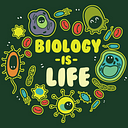A look back at some of the astounding biology milestones in the 2010s
According to Steven Rindner, a bio student, the 2010s was quite a fascinating decade in terms of breakthroughs in the field of biology. In this blog post, he recounts two of his favorite milestones.
The catalyst
The first breakthrough Steven Rindner remembers celebrating was the discovery of a molecule that could very well be a huge piece in the picture of the origin of multicellular life.
When scientists and researchers found GK-PID, a molecule almost as old as this planet’s life, they knew it was mind-bogglingly special. Moreover, it was found that this particular molecule was a catalyst for what was to be one of the most significant steps in the evolution of life on the planet.
Around 800 million years ago, GK-PID was responsible for transforming single-celled organisms into multicellular organisms. GK-PID acted as a molecular carabiner as it pulled chromosomes together before latching them onto the inner wall of a cell membrane. This process leads to non-cancerous cell division, which is growing as we know it.
What scientists and researchers find fascinating is that the ancient GK-PID wasn’t always like that. It had only become a carabiner because it mutated.
The path to healing
The second breakthrough that left bio students like Steven Rindner in awe was the discovery of stem cells as a treatment for patients struggling with the effects of stroke.
One of the most important discoveries not just in 2016 but in medical history took place at a clinical trial at Stanford University School of Medicine.
Modified human stem cells were injected into the brains of several patients who suffered from chronic stroke. The experiment was a success, Steven Rindner says, with almost zero negative side-effects afflicting the patients. All 18 patients had a much more significant rate of healing, with some of them being.
